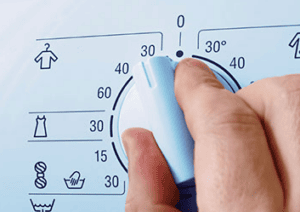How to Clean a Dishwasher: Ultimate Cleaning Guide
-
 By
Ethan Clarke
By
Ethan Clarke

Knowing how to clean your dishwasher is essential for every homeowner. Despite its importance, the the appliance is often overlooked in the home cleaning routine.
If neglected, your dishwasher’s filter can become less efficient and even start emitting unpleasant odors. But don’t worry- we’re here with an easy guide on how to clean a dishwasher, ensuring it stays sparkling and odor-free for years of reliable service.
Table of Contents
ToggleThe Importance of Cleaning Your Dishwasher
Cleanliness is key when it comes to maintaining the efficiency and longevity of your dishwasher. Over time, remaining bits of food can accumulate in various parts of the machine such as its filter, drain, or even in the utensil holders.
If not addressed regularly with DIY methods or a dishwasher cleaning product, these leftovers will mix with soap residue to create unpleasant odors. Not only that but it can also lead to costly repairs.
Maintaining the Dishwasher Filter
Failure to maintain your stainless steel dishwasher could lead you down an unfortunate path filled with dirty dishes after every wash, despite going through multiple cleaning cycles.
It’s simple – a clogged dishwasher filter, whether located on the bottom rack or under the lower spray arm depending on the model type, results in less efficient operation due to restricted water flow (check the owner’s manual for specific instructions on how to locate the filter).

In addition to that, you want to keep an eye out for potential blockages within the dishwasher drain (ie. the bottom of the dishwasher).
Leftover bits from rinsed plates, cups, cutlery, etc., might get stuck there, preventing proper drainage and causing standing water at the end of each full cycle – a perfect environment for contaminants to thrive.
When you understand how to clean a dishwasher drain, it helps turn a potential headache into a simple maintenance task. That’s why it’s so important to inspect the dish soap drains on a regular basis and remove any debris if found.
How Often Should You Clean Your Dishwasher?
How often you clean your dishwasher plays a big role in its performance and lifespan. So how often does your dishwasher need to be cleaned?
Cleaning Different Parts of Your Dishwasher Regularly
We recommend cleaning your dishwasher about every 2 weeks. Additionally, you’ll want to inspect different areas of the machine where grime buildup occurs – including the bottom of the dishwasher.
Here are some other areas that you want to check and wipe regularly:
Dish Racks

Weekly inspections should be done on the top rack and bottom rack to check for food particles or other debris lodged between prongs. Wipe them down using warm soapy water along with a soft cloth or sponge.
Spray Arms
They distribute hot running water evenly across dishes during the first cycle but can get blocked due to tiny bits of leftover foods stuck-on food particles and into their holes. Monthly inspection followed by necessary cleanup will help ensure optimal functionality.
Doors
Stainless steel doors need an occasional wipe with a very damp cloth or microfiber cloth as well, especially when fingerprints start showing. You can also wipe the exterior of the dishwasher with vinegar with a microfiber cloth.
Cleaning With ACTIVE Dishwasher Tablets – Easy & Effective
ACTIVE Dishwasher tablets are specifically designed to clean every inch of your machine – plus, they’re easy to use!
How to Use ACTIVE Dishwasher Tablets
These tablets are septic-safe and will remove hard water, calcium, and limescale buildup, on top of odors.
Step 1: Add the Tablet(s)

Add one foaming tablet to the detergent dispenser tray (make sure that the dishwasher is empty before cleaning). If it’s your first time using the cleaner or if there’s heavy residue, add a second tablet to the bottom of the dishwasher.
Step 2: Run a Normal Cleaning Cycle

Once the tabs are in, run the dishwasher on a normal cycle (hot water is best). Wait for it to finish completely before opening the dishwasher’s exterior door and letting it air dry. If the dishwasher is not fully clean after the first attempt, repeat the steps again.
Step 3: Repeat Every Two Weeks

How often should you use the tablets? Once every two weeks (one pack comes with 24 tablets, which will last you an entire year).
And the tabs can be used with all dishwashers—including those that are white and have stainless steel parts, so you won’t have to worry about them not being compatible.
Supply:
- ACTIVE Dishwasher Tablets
ACTIVE Dishwasher Cleaner
Easily clean your dishwasher to keep it smelling fresh and free from limescale residue & grime.

15% Off Your Order on Amazon
×Click below to reveal the 15% off coupon for your entire ACTIVE purchase on Amazon.com
How to Clean a Dishwasher – DIY Methods
Cleaning your dishwasher is a straightforward task if you break it down into its individual components. For example, household items such as vinegar and baking soda can be a good starting point.
Clean Your Dishwasher with Vinegar
This versatile kitchen staple is renowned for its cleaning capabilities, cutting through grease and eliminating stubborn stains.
Supplies:
- White vinegar
- Dishwasher-safe bowl

Step 1:
Fill a large dishwasher-safe bowl with two cups of white vinegar.

Step 2:
Place the bowl of vinegar on the top rack of your dishwasher and run a regular washing cycle without any detergent or use a drying cycle.
Clean Your Dishwasher with a Baking Soda Rinse
A baking soda rinse can help eliminate odors from smelly dishwashers, making them smell fresh after every cleanup session.
Supplies:
- Baking soda
- White vinegar (optional)
Step 1:
Make sure the dishwasher is empty and sprinkle one cup of baking soda across the bottom rack area.

Step 2:
Run a short hot-water cycle without any dishes inside.
The combination of hot water and baking soda will remove any remaining residue and give you sparkling clean results.

While you’re at it, you can also use baking soda and vinegar to clean out your garbage disposal unit.
Dishwasher Cleaning Products
Chances are, DIY options like vinegar and baking soda won’t be enough if it’s been a while since you last cleaned your dishwasher. In cases like that, you’ll want to use a commercial cleaner such as ACTIVE Dishwasher Tablets.

Septic safe, the tablets will penetrate and dissolve odor-causing residue throughout the dishwasher, including hard-to-reach areas like heating elements and pumps.
Preventing Smelly Dishwashers
No one enjoys a stinky dishwasher. It’s an unwelcome surprise in any kitchen, but with the right care and maintenance, it can be avoided.
Here are a few steps that you can take to prevent it.
Rinse Your Dishes Before Loading Into Empty Dishwasher
The first step to keeping your dishwasher smelling fresh is to pre-rinse dishes before loading them into the machine. Ideally, there shouldn’t be any grease left on the surface.
Leftover food debris on your dishes often become sources of unpleasant odors if they linger inside after a wash cycle.
Run Regular Cleaning Cycles

You can also do a quick clean of your dishwasher with vinegar and baking soda. They will neutralize lingering foul scents while also helping remove soap scum and mineral deposits which may contribute to those nasty smells if left unchecked.
Remember, dishwashers themselves need regular cleanings too. Running dedicated cleaning cycles will help keep your appliance odor-free over time.
If the DIY methods don’t do the trick, or if you’re looking for a simple all-in-one solution, then ACTIVE Dishwasher Cleaner is ready to do the job for you.
A single box comes with 24 cleaning tablets – that’s 2 cleanings per month for a whole year! All you need to do is toss a tablet into the detergent dispenser and let ACTIVE do the rest.
Leave the Dishwasher Door Open
Last but not least, you want to leave the door slightly open after each load has finished. This will allow for air circulation within your stainless steel or white dishwasher.
This will help dry out any remaining moisture – thus reducing the chances of unwanted smells over time.
Don’t Neglect the Spray Arms

The arms in your dishwasher play an integral role during the cleaning cycle by spraying water onto dirty dishes.
Over time, however, food deposits may clog these holes and compromise their function, leading to poorly cleaned dishes. That’s why it’s so important to check on them regularly.
Clean the Interior of the Machine
Manual scrubbing of the interior is also a good idea – especially in areas where debris tends to accumulate, such as corners.
For example, you can use tools like a soft bristle brush dipped in hot soapy water, to tackle stubborn spots. Alternatively, you can use a toothbrush dipped in soap. From there, you can wipe the surface with a dry cloth.
Dishwasher Cleaning FAQs
What is the best way to keep your dishwasher clean?
ACTIVE Dishwasher Cleaner is the most effective way to clean a dishwasher. The citric acid based formula targets mineral buildup and grime, leaving your dishwasher spotless and fully clean.
How do you deep clean a dishwasher?
DIY methods involving hot water cycles with distilled white vinegar fill followed by warm water and a cup of baking soda can be a good starting point. You can also use a commercial dishwasher cleaner such as ACTIVE Dishwasher Cleaner tablets.
SAVE
15% off
Your Next ACTIVE
Purchase on Amazon
15% Off Your Order on Amazon
×Click below to reveal the 15% off coupon for your entire ACTIVE purchase on Amazon.com
Limited Time Offer




